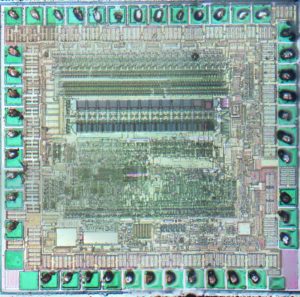Reading Philip P89C54 MCU Protected Program
Reading Philip P89C54 MCU Protected Program need to start from the understanding of oscillator, XTAL1 and XTAL2 are the input and output, respectively, of an inverting amplifier. The pins can be configured for use as an on-chip oscillator.
To drive the device from an external clock source, XTAL1 should be driven while XTAL2 is left unconnected. There are no requirements on the duty cycle of the external clock signal, because the input to the internal clock circuitry is through a divide-by-two flip-flop to Break IC.
However, minimum and maximum high and low times specified in the data sheet must be observed.
A reset is accomplished by holding the RST pin high for at least two machine cycles (24 oscillator periods), while the oscillator is running. To insure a good power-on reset, the RST pin must be high long enough to allow the oscillator time to start up (normally a few milliseconds) plus two machine cycles from Reading Philip P89C54 MCU Protected Program. At power-on, the voltage on VCC and RST must come up at the same time for a proper start-up.
Ports 1, 2, and 3 will asynchronously be driven to their reset condition when a voltage above VIH1 (min.) is applied to RESET. The static design enables the clock speed to be reduced down to 0 MHz (stopped). When the oscillator is stopped, the RAM and Special Function Registers retain their values in order to extract Freescale Chip P87C550 Flash Code. This mode allows step-by-step utilization and permits reduced system power
consumption by lowering the clock frequency down to any value. For lowest power consumption the Power Down mode is suggested.
In the idle mode (see Table 3), the CPU puts itself to sleep while all of the on-chip peripherals stay active. The instruction to invoke the idle mode is the last instruction executed in the normal operating mode before the idle mode is activated if Reading Philip P89C54 MCU Protected Program.
The CPU contents, the on-chip RAM, and all of the special function registers remain intact during this mode. The idle mode can be terminated either by any enabled interrupt (at which time the process is picked up at the interrupt service routine and continued), or by a hardware reset which starts the processor in the same manner as a power-on reset.


